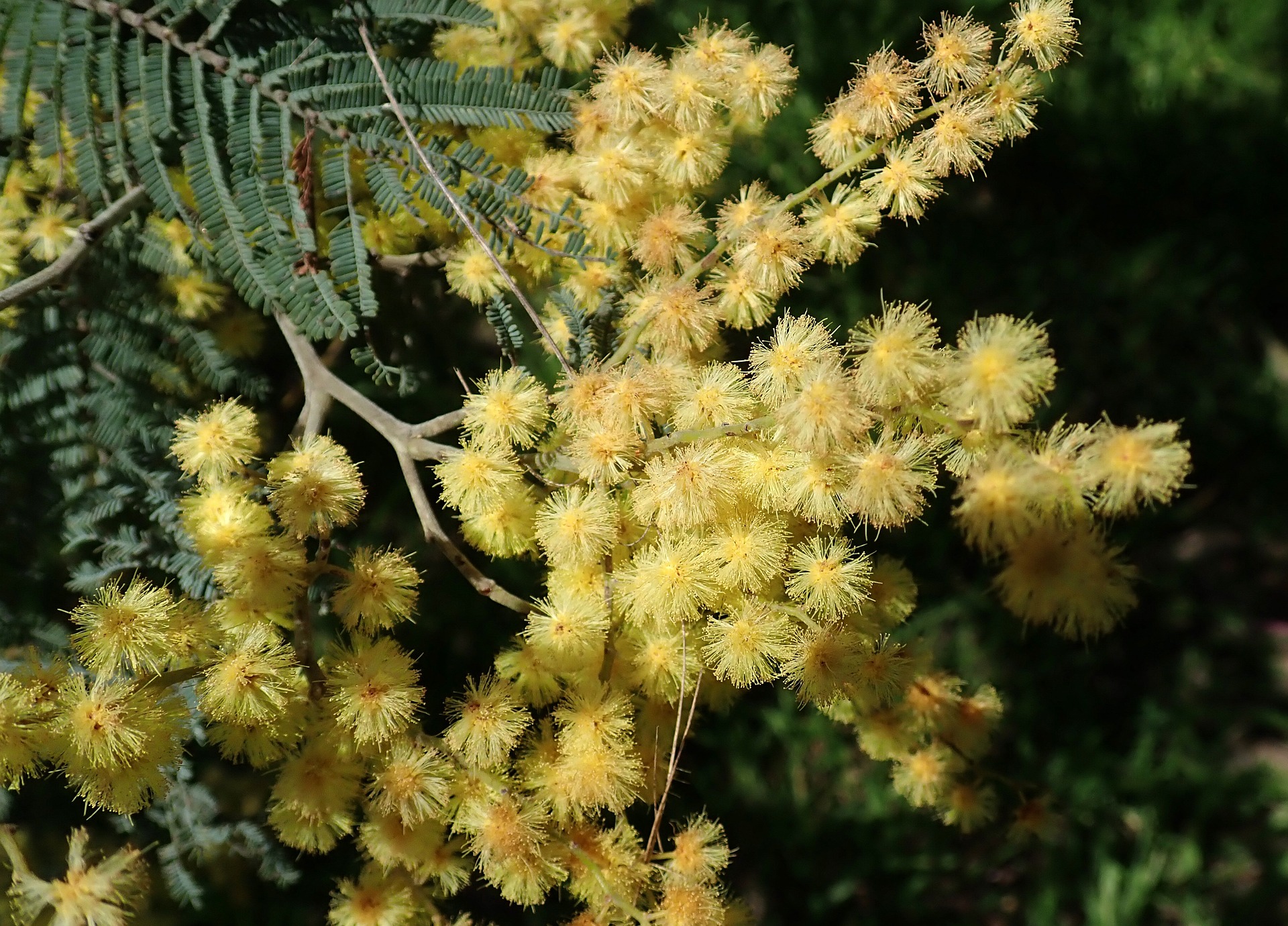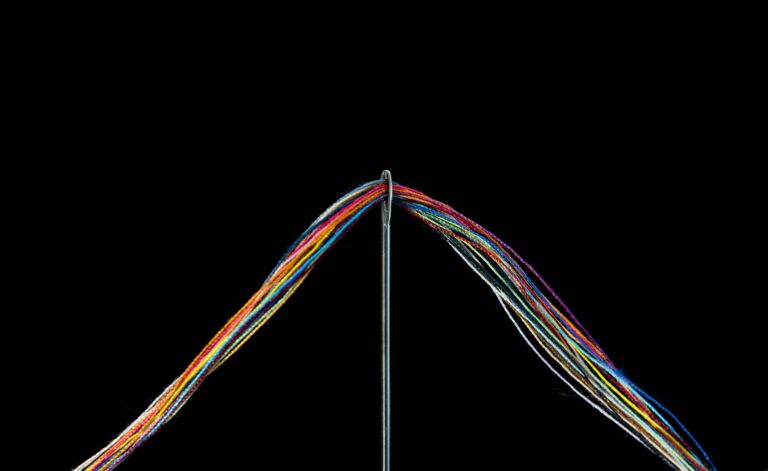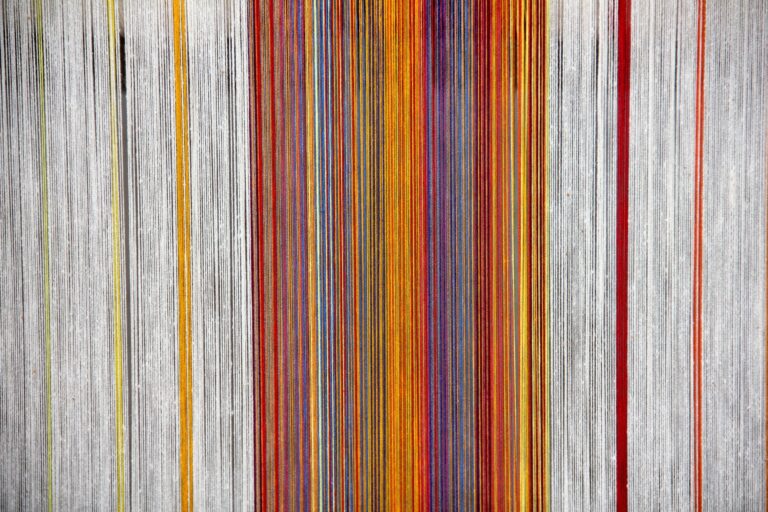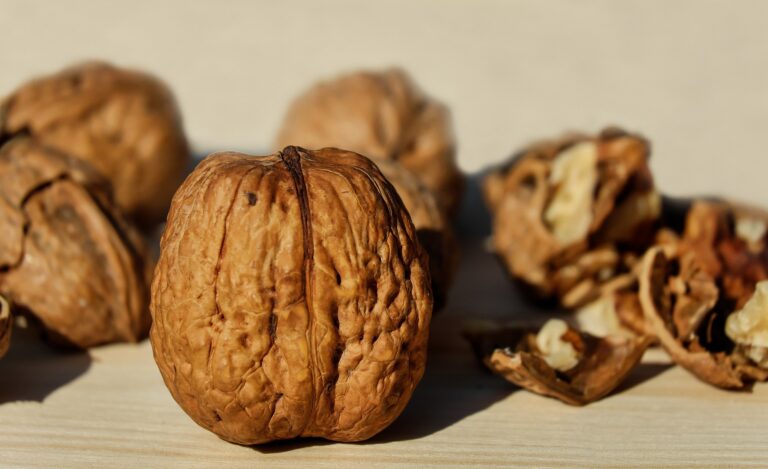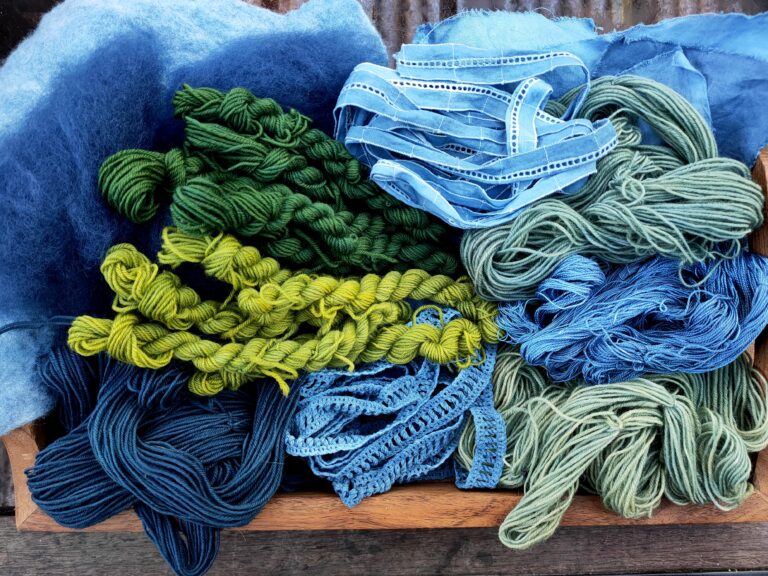Have fun solar dyeing with Wattle Tree twigs

This natural dye has become a great staple in my dye box. Once set up it can give you a steady supply for years to come. Try solar dyeing with Wattle Tree Twigs.
In my previous post on wattle flowers I mentioned that we had a portion of a wattle tree taken down. This became a great opportunity to do several natural dye experiments including this one, which has become a permanent feature on my balcony.
After you set up your solar jar you can leave it to sit in the sun and keep producing dye for years to come. When you want to to use the dye, just take out some of the dyed water and refill the jar for next time. Bark from trees does take a little longer to release its colour in the solar dyeing process but it also means that you can reuse it over and over again.
Solar Dyeing with Wattle Tree Twigs
In this experiment we will use 2 different mordants, to give a variety of colour in our natural solar dyeing journey.
As with most experiments, I am going to use the process of solar dyeing.
This is basically putting your dyestuff in a glass jar and leaving it in the sun to work its magic. The beauty of living in Australia means that I do have the benefit of hot summers. If you don’t have these conditions, it does not mean you cannot try this process. You will just need to experiment with your own environments advantages and disadvantages. Leave it in a room that gets sunlight and may have great heating or try longer dyeing periods.
These experiments are only to show you what has and hasn’t worked for me, so you can pick through the information to start your own experimenting journey.
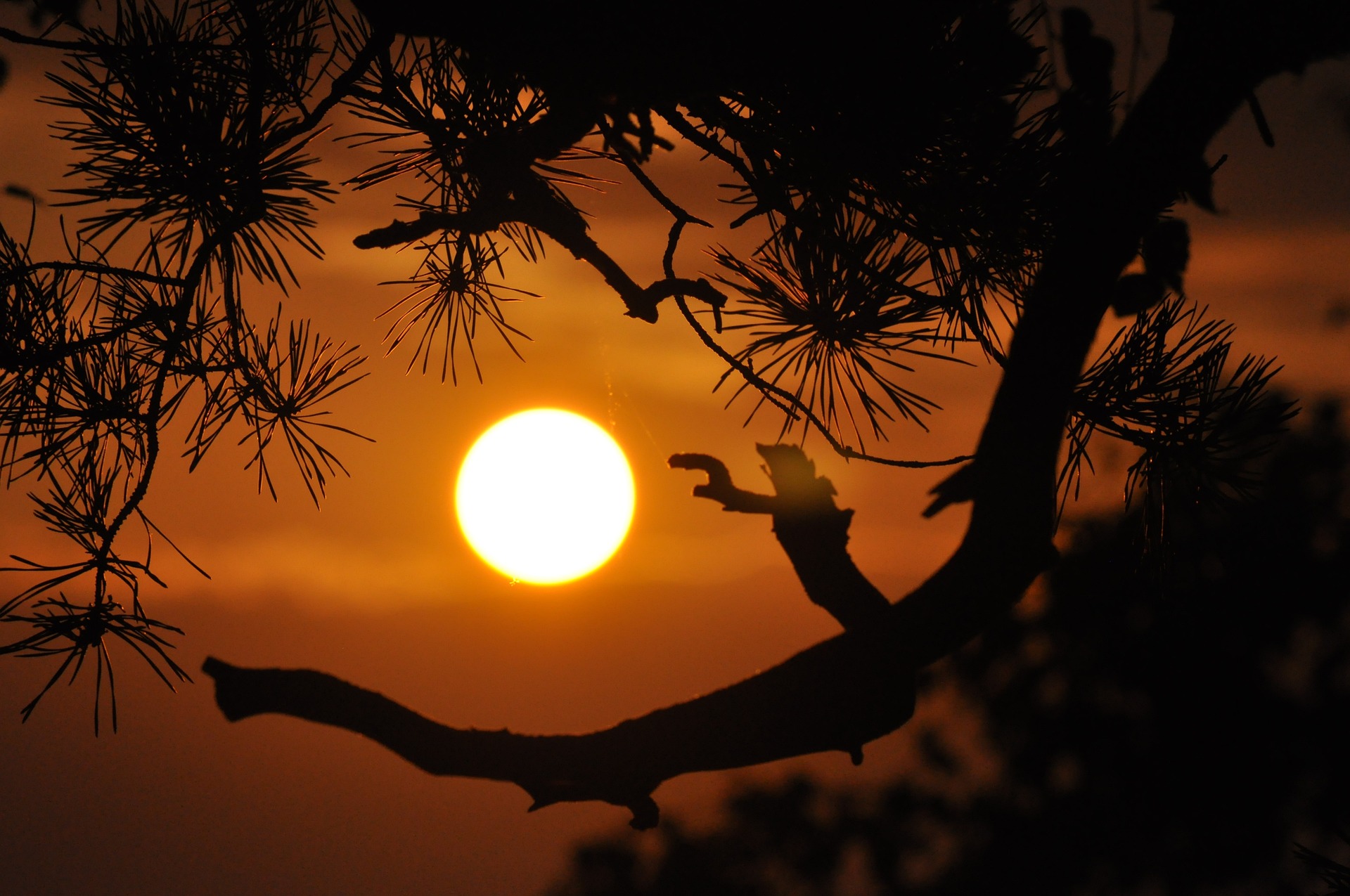
Safety Note
Always ensure when dyeing of any nature, to keep all saucepans and utensils used in the process, separate from your general cooking supplies. You do not want to cook with anything that has been used to mordant or naturally dye your fibres. You should also wear gloves and a mask while handling your chemicals.
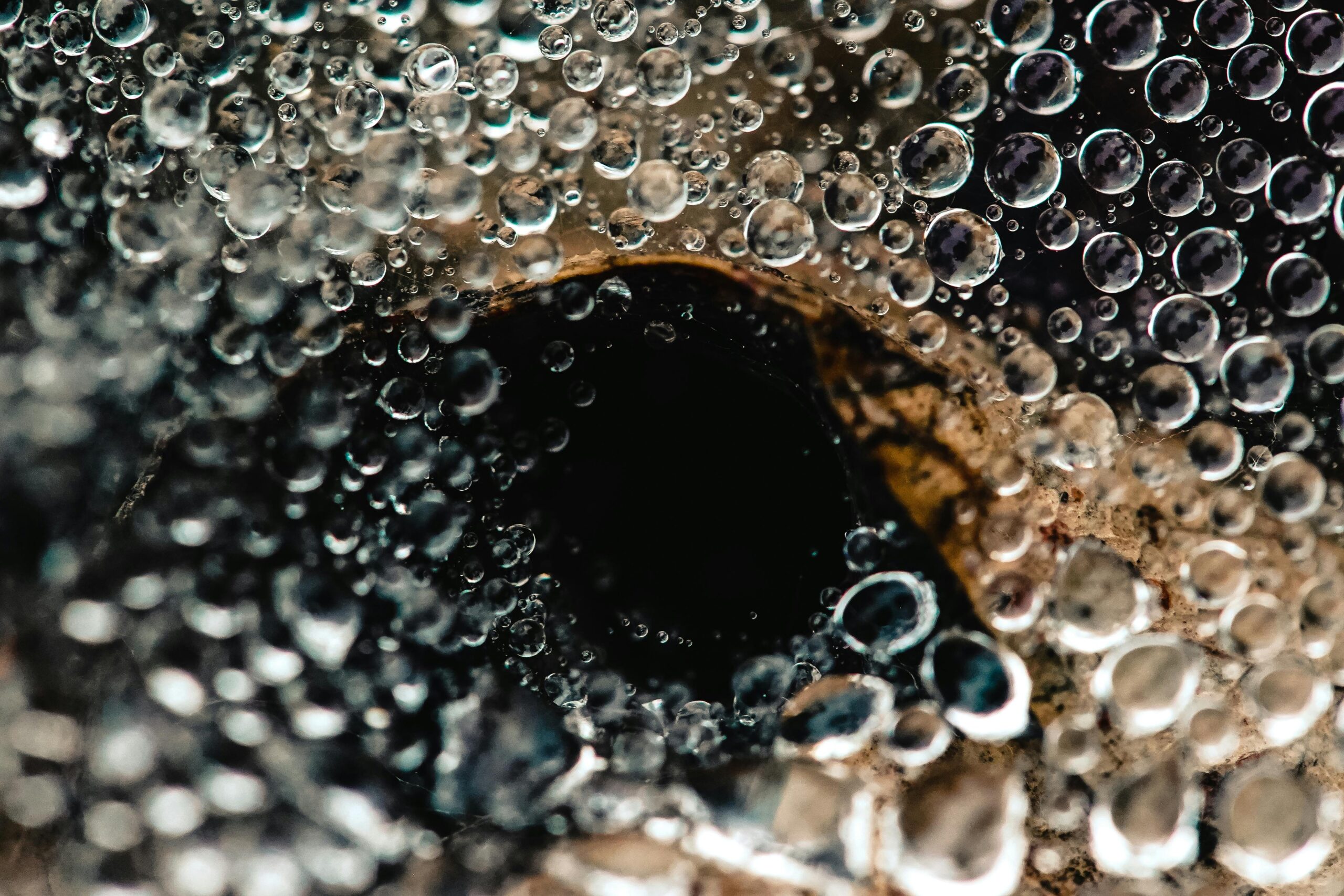
Fibre Preparation
Before dyeing you must first scour (wash) and mordant your fibre.
For this experiment I have used wool roving mordanted with both alum and iron..
What you will need when dyeing with Wattle Tree Twigs
Water
Sticks from a wattle tree
Wool Fibre- So all up I have used 4 10g lots of wool roving. 2 mordanted with alum, and 2 with iron.
3 Glass Jars- 1 large jar and 2 smaller jars. I used a 3 litre jar and 2 1 litres.
Washing soda
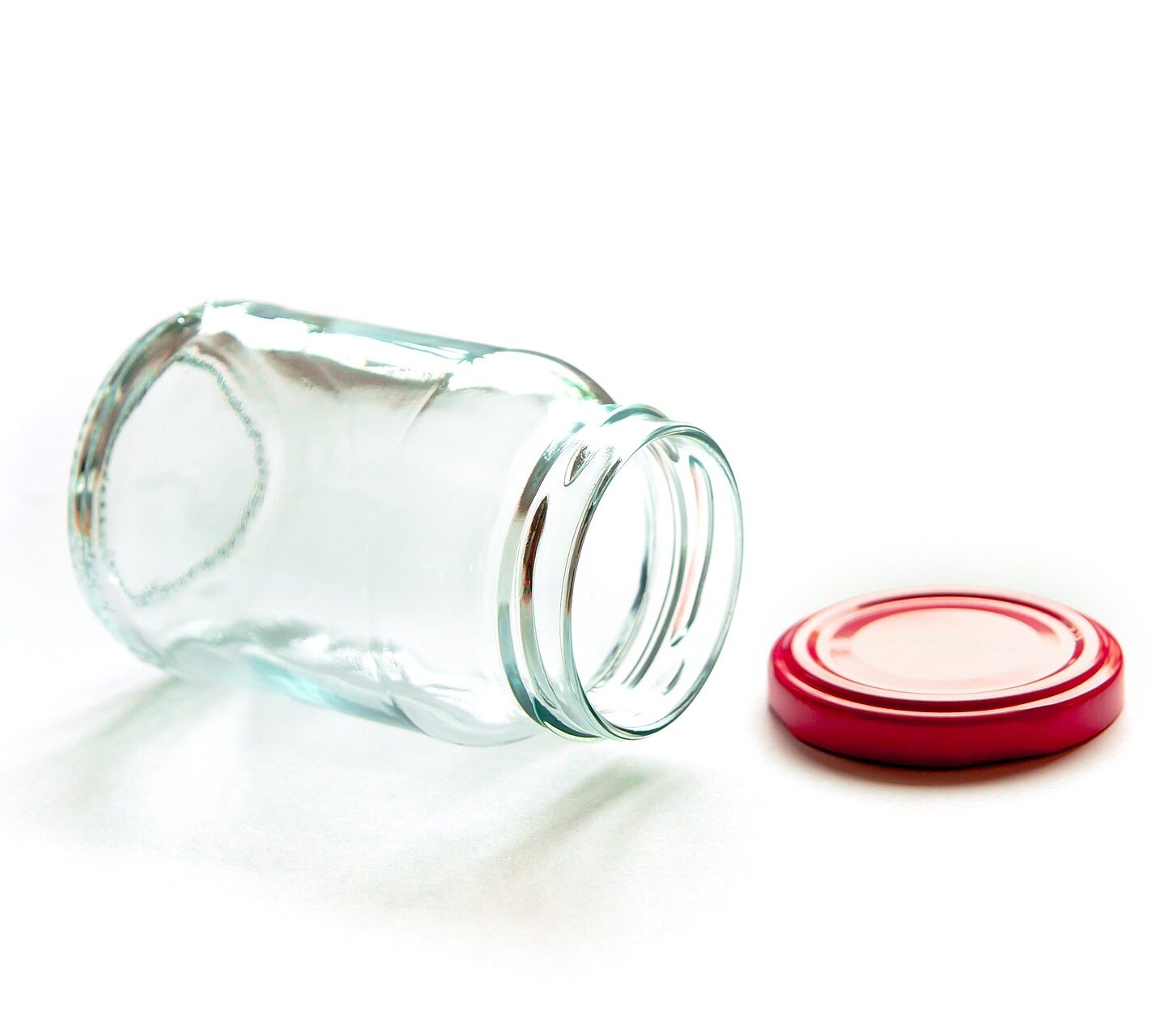
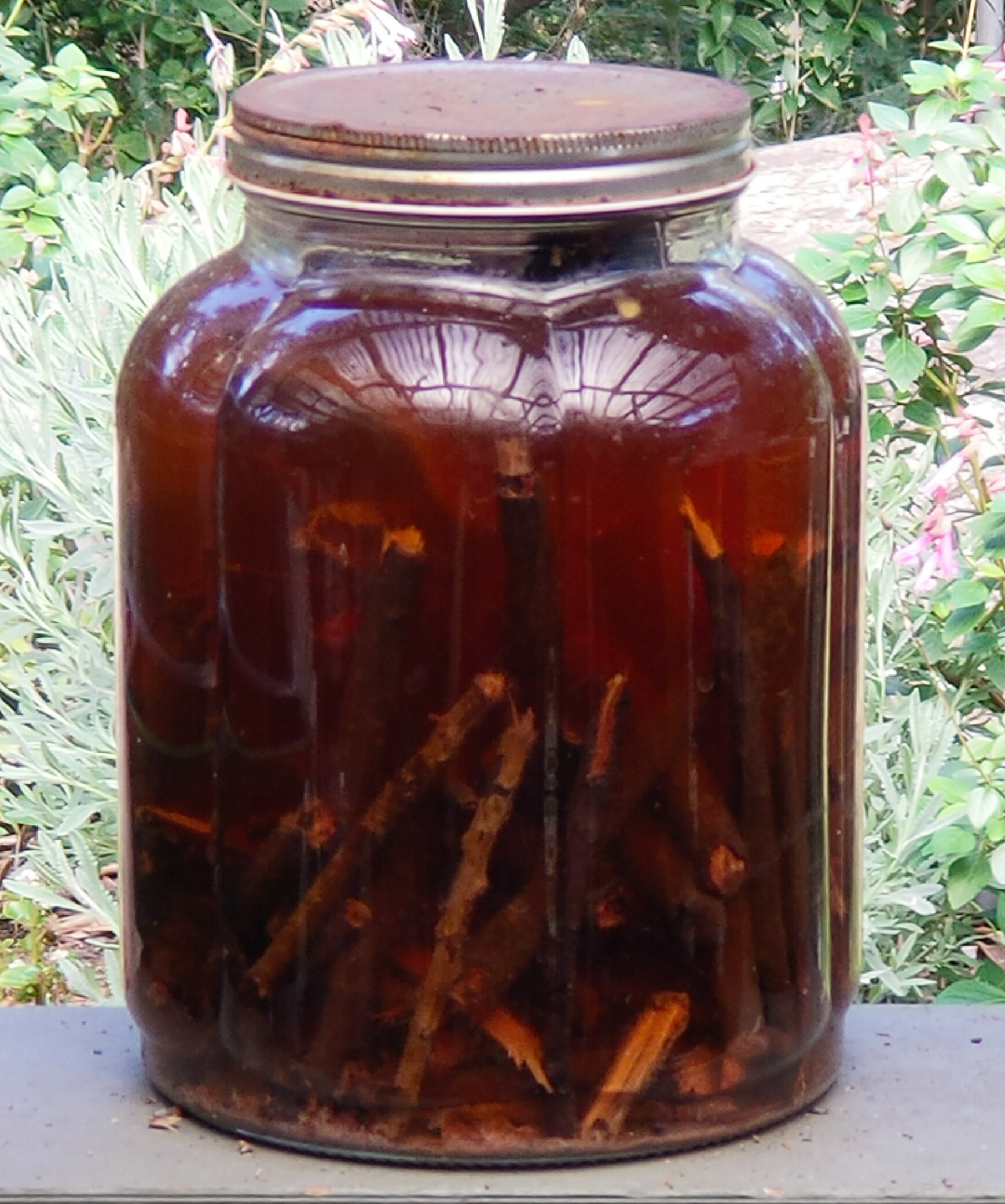
Procedure
It is a good idea with anything that is thick and hard like this sticks, to set up your dye jars and leave them for a month to soak colour into the water.
Step1: Place your broken up pieces of twigs into a heatproof bowl and add boiling water.
Step2: When cool enough transfer into your large glass jar and leave outside for a month.
Step 3: Fill the 2 smaller jars with dye water from the original large jar. You can now refill the large jar with fresh water and leave for another dyeing session.
At this stage I have added some washing soda to the small jars. Take about 1/4 teaspoon of washing soda/ Soda Ash and dissolve into hot water. Add this to the dye baths.
In one jar place 1 piece of wet wool alum mordanted roving and in the other jar place a piece of wet iron mordanted roving. Leave for 1 week.
Step 4: Take your wool out of the jar and leave to dry completely without rinsing.
You can at this stage do an exhaust dye bath and add some more roving to your jars for a week. Just make sure to add alum mordanted wool to the jar that previously had alum mordanted wool in it and the same with the iron jar. Mordants will slightly contaminate the dye bath, especially iron.
Step 5: Rinse in water baths until they are clear. As I was using roving I did not want to use running water to start it felting, so I used a few bowls of water. Always make sure you wool does not experience dramatic temperature changes. Make your water room temperature. Leave to dry
Results from Dyeing with Wattle Tree Twigs
As you can see we have some great results here with our wattle twigs. They may not be flashy and bright colours, but they are some great solid results that can be used in any crafters palette.
Across the page we have the roving after it was rinsed. Then comes the felt made from the roving. I figured that the wet felting procedure would be a good indication of how well the dye stands up to washing. Then comes the sun test. The felt was left on a window sill for 4 weeks in the hot Australian summer to see if it would fade.
There is some variation in colour with the felting but I feel this may be due to the slight alkaline properties of the olive oil soap that was used in the felting process. The dye held up great to the hot Aussie sun.
I hope this helps and encourages you to try your own experimenting in the world of natural dyes. See what colours the bark around your own backyard might produce 🙂
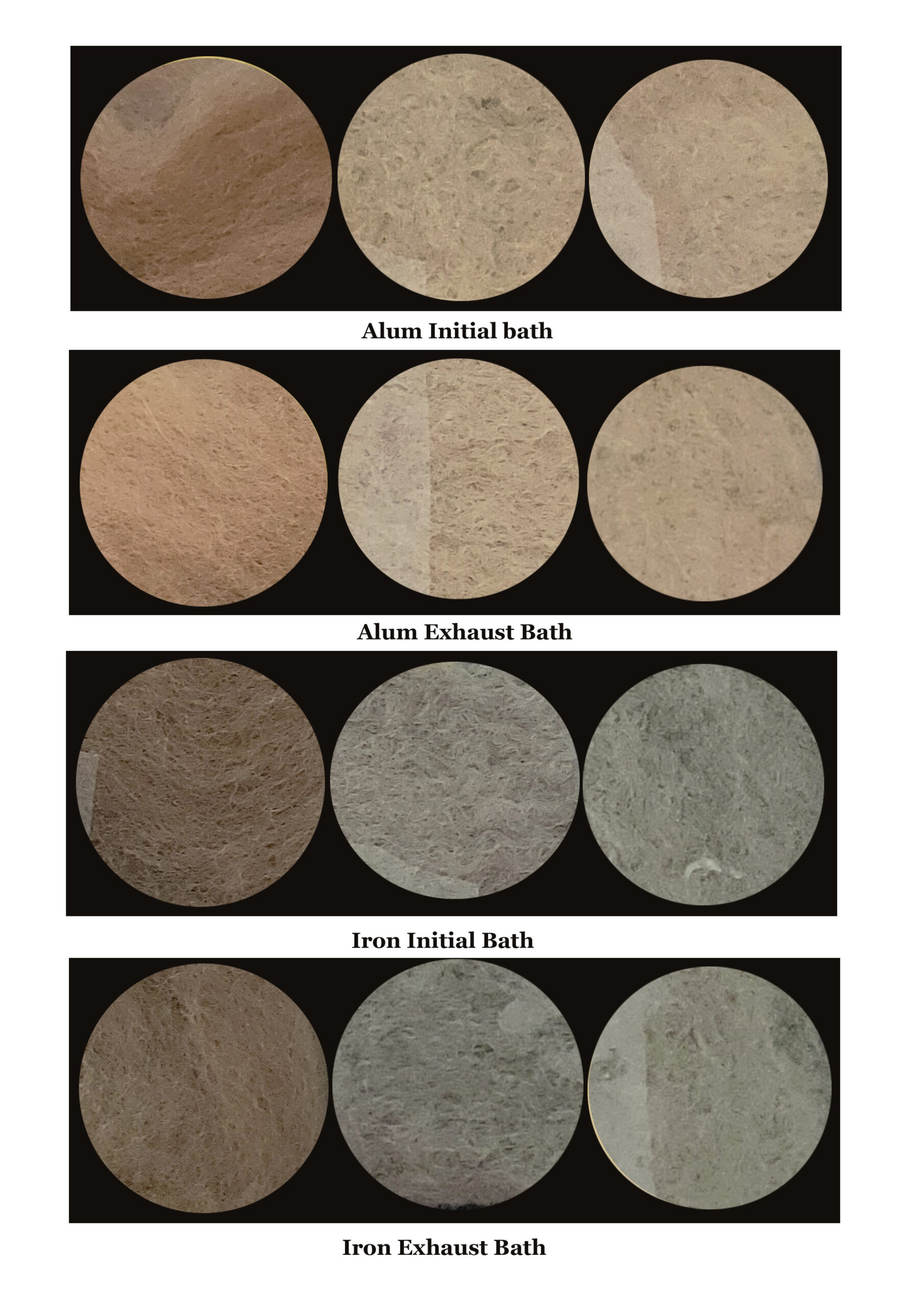
Update of dyed threads 19/9/2024
I wanted to recheck that threads dyed with wattle twigs could be washed without the dye running. In this instance I have mordanted 2ply wool threads with alum and then dyed them in a solar bath of wattle twigs.
The first circle are the threads after being sprayed with water. The 2nd circle shows the same threads after being hand washed with a gentle soap and then dried. As you can see the dye did not run at all. I was very happy with these results.

Join us on Instagram www.instagram.com/DyetoCraft
Etsy Shop Now open
If you like the idea of using organic naturally dyed threads in your craft but just don’t have the time, come and have a look at our Etsy Shop where you will find an array of beautiful colours provided by nature.

